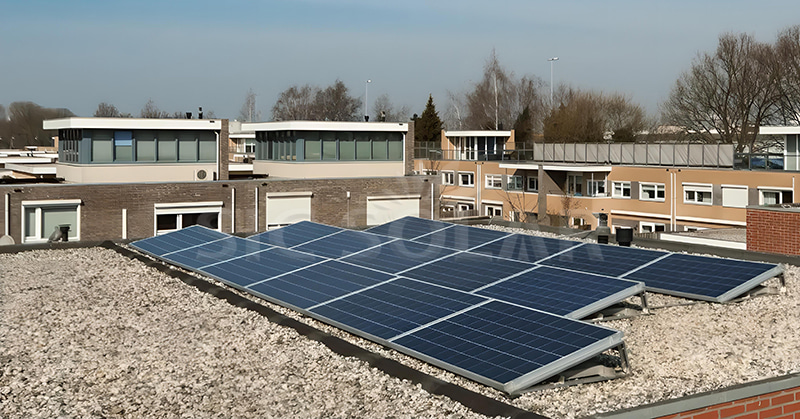Installing solar panels on a flat roof can be an effective way to harness solar energy, especially in urban areas where space is limited. However, ensuring that the panels are securely anchored is crucial to withstand various weather conditions, such as high winds and heavy rain.
Why Proper Anchoring Is Important
Properly anchoring solar panels on a flat roof is essential for several reasons:
- Wind Resistance: Flat roofs are more susceptible to wind uplift. Without proper anchoring, panels can become dislodged, which can lead to damage or complete system failure.
- Stability: Secure anchoring ensures that the panels remain in place and perform optimally over their lifespan.
- Safety: A well-anchored system reduces the risk of panels being blown off, which could pose hazards to people and property below.
Best Practices for Anchoring Solar Panels on Flat Roofs
- Use the Right Mounting System
The first step in anchoring solar panels on a flat roof is choosing an appropriate mounting system. Mounts designed specifically for flat roofs are available, often featuring adjustable angles to optimize solar exposure. SIC Solar offers a variety of mounting solutions tailored for flat roof installations, ensuring stability and efficiency. - Ballasted Systems
Ballasted mounting systems utilize weight to hold the solar panels in place. This method is particularly effective for flat roofs, as it does not require penetrating the roof surface, which minimizes the risk of leaks. These systems typically involve placing concrete blocks or other weights on the mounting frame to secure the panels. It’s important to calculate the appropriate ballast weight based on local wind loads and building codes. - Penetrating Mounts
In some cases, using penetrating mounts may be necessary, especially in areas with high wind speeds. This method involves securing the mounting brackets directly to the roof structure. When using penetrating mounts, ensure that proper sealing techniques are applied to prevent water intrusion. SIC Solar mounting systems are designed to allow for secure penetration while maintaining roof integrity. - Adjustable Tilt Angles
To maximize energy production, consider using adjustable tilt mounts that allow you to set the panels at the optimal angle for your geographical location. This ensures that the panels capture the most sunlight throughout the year, enhancing overall system efficiency. - Positioning and Layout
Plan the layout of your solar panels carefully. Ensure adequate spacing between panels to prevent shading and allow for maintenance access. Additionally, consider the direction and angle of installation to optimize solar exposure. - Regular Inspections and Maintenance
After installation, regularly inspect the anchoring system and mounting structure for any signs of wear, damage, or loosening. Address any issues promptly to maintain the system’s integrity and performance.
How SIC Solar Can Enhance Your Installation
SIC Solar specializes in producing high-quality mounting systems that simplify the installation process for flat roof solar panels. Here’s how SIC Solar can make a difference:
- Durable Materials: SIC Solar mounting systems are constructed from robust materials designed to withstand various weather conditions, ensuring long-term reliability.
- Customizable Solutions: With adjustable tilt options, SIC Solar’s systems can be tailored to match your specific roof and energy needs, maximizing solar exposure.
- Easy Installation: Designed for user-friendly installation, SIC Solar’s products help both professionals and DIY enthusiasts achieve secure and efficient mounting with ease.
- Integrated Ballasting Options: SIC Solar provides innovative ballasting solutions that allow for secure installations without penetrating the roof, reducing the risk of leaks and maintaining the roof’s integrity.

Anchoring solar panels on a flat roof requires careful consideration of the mounting system, weight distribution, and installation techniques. By following best practices and utilizing high-quality mounting solutions from SIC Solar, you can ensure that your solar installation is secure, efficient, and built to withstand the elements. With the right approach, you can maximize your solar energy production while protecting your roof and investment for years to come.